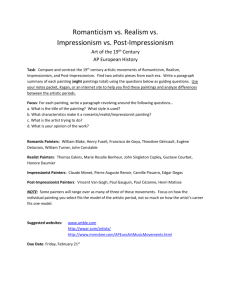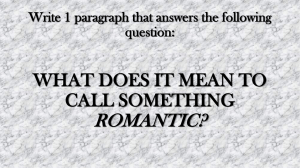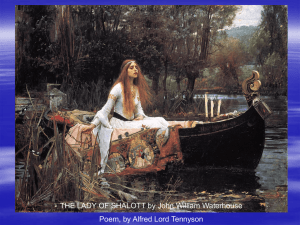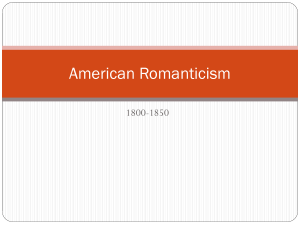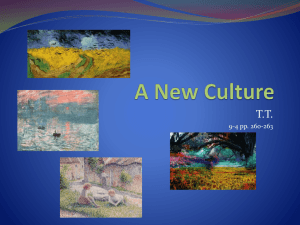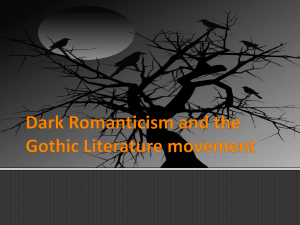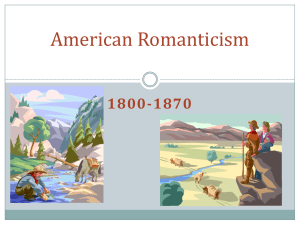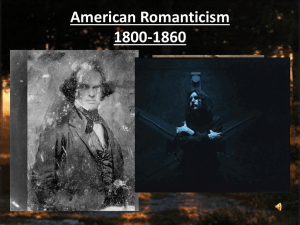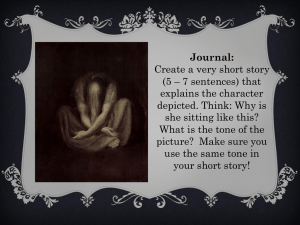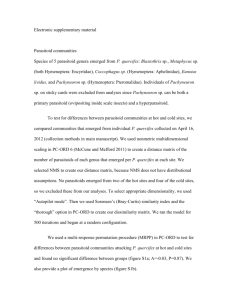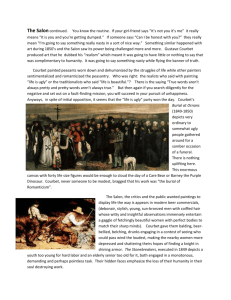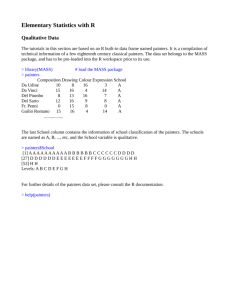Terms and People
advertisement
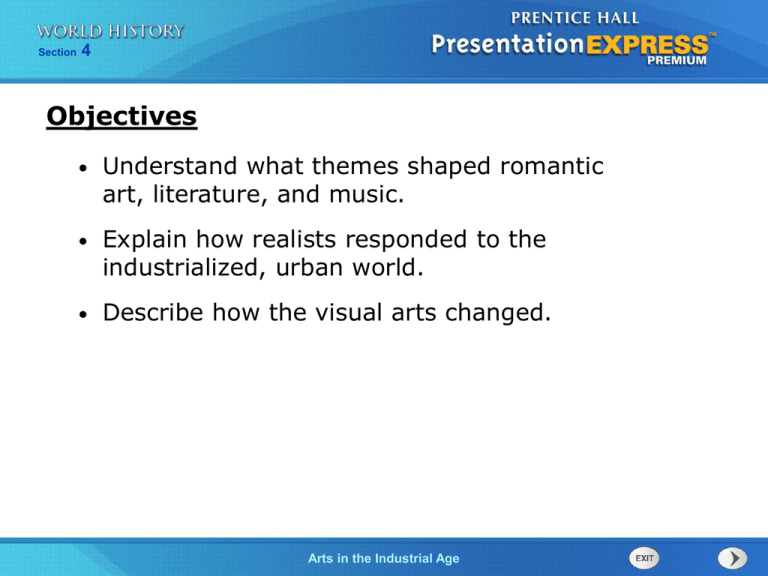
Section 4 Objectives • Understand what themes shaped romantic art, literature, and music. • Explain how realists responded to the industrialized, urban world. • Describe how the visual arts changed. Arts in the Industrial Age Section 4 Terms and People • William Wordsworth – a poet, part of the romantic movement • William Blake – a poet and writer who contributed to the romantic movement • romanticism – 19th-century artistic movement that appealed to emotion rather than reason • Lord Byron – a British poet who wrote about moody, isolated, and romantic heroes • Victor Hugo – a French novelist who recreated his country’s past in novels such as The Hunchback of Notre Dame Arts in the Industrial Age Section 4 Terms and People (continued) • Ludwig van Beethoven – a romantic German composer whose music combined classical forms with a stirring range of sound • realism – an attempt to represent the world as it was, without the sentiment associated with romanticism • Charles Dickens – an English novelist who portrayed the lives of slum dwellers and factory workers in his books • Gustave Courbet – a French realist painter who depicted what he saw in his works Arts in the Industrial Age Section 4 Terms and People (continued) • Louis Daguerre – a French inventor who improved on earlier technologies to produce successful photographs by the 1840s • impressionism – a style of art in which painters attempted to capture the first fleeting impression made by a scene or object • Claude Monet – an impressionist artist who applied colors without combining them, relying on the human eye to blend them • Vincent van Gogh – a postimpressionist painter who experimented with sharp lines and bright colors Arts in the Industrial Age Section 4 What artistic movements emerged in reaction to the Industrial Revolution? A cultural movement called romanticism emerged out of the Industrial Revolution and flourished between 1750 and 1850. It emphasized imagination, freedom, and emotion. Arts in the Industrial Age Section 4 Romanticism glorified nature and communicated intense feelings. This artistic style emerged in the mid 1700s and was a reaction to neoclassicism, which focused on reason and restraint. Arts in the Industrial Age Section 4 Romantic writers created a new kind of hero. Lord Byron was known for creating isolated, largerthan-life characters in his poetry. His hero was often mysterious and different from others in society. Two other examples of this sort of character were Goethe’s Faust and Charlotte Brontë’s Rochester in her novel Jane Eyre. Arts in the Industrial Age Section 4 Some romantics found inspiration in the past. Victor Hugo wrote about France’s past in The Hunchback of Notre Dame. Architects built new structures in the medieval Gothic style. The buildings of the British Parliament are an example of this. Arts in the Industrial Age Section 4 Romantic composers and artists stirred deep emotions. • Ludwig van Beethoven took advantage of all the instruments in the orchestra to produce a stirring range of sound. • Landscape painters such as J. M. W. Turner tried to show the power of nature in their work with bold color. Arts in the Industrial Age Section 4 A new artistic movement called realism emerged in the mid-1800s. Realists sought to depict life as it really was, and often focused on the harsh side of existence. Charles Dickens portrayed the lives of slum dwellers and orphans in his popular novels, and Émile Zola wrote of class warfare in his work. Arts in the Industrial Age Section 4 Realism also emerged in drama and in art. • Henrick Ibsen produced plays attacking hypocrisy and strict social rules. • Gustave Courbet painted rough laborers in his works. Arts in the Industrial Age Section 4 As photography emerged, painters took new directions in their work. • Louis Daguerre improved on earlier technology to produce photographs by the 1840s. • Since the camera could be used to realistically depict life, painters faced the challenge of what to do next. Impressionism evolved as a result. Arts in the Industrial Age Section 4 Impressionist painters sought to capture an “impression” of an object or a scene. • Unlike earlier artists, Claude Monet and other impressionists did not attempt to hide their brush strokes. • These artists attempted to create a fresh view of the world. • Postimpressionists, such as Vincent van Gogh, experimented further with line and color to add a dreamlike quality to images in their work. Arts in the Industrial Age Section 4 Section Review QuickTake Quiz Know It, Show It Quiz Arts in the Industrial Age

